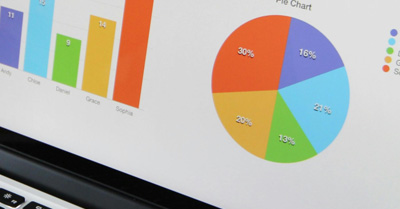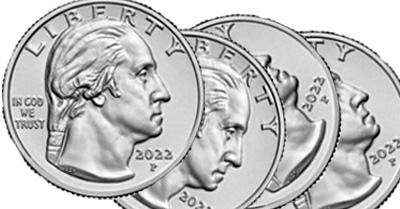Fractions in English (Basic, A-Level)
In this lesson, you will learn how to say the fractions in English (½, ⅔, ¾, and so on). You can also represent fractions as decimals such as .5 or half, .25 or a quarter, and so on.
The purpose of this lesson is to teach you the vocabulary related to fractions and decimals, not to teach you mathematics.

Pixabay | Pexels
Prerequisite: To understand this lesson, you need to know the cardinal numbers and ordinal numbers in English.
This lesson includes practice and quizzes.
Using cardinal and ordinal numbers in fractions
What Are Fractions?
You get a fraction by dividing something into smaller parts. If you divide a dollar into four parts, you have 1 dollar divided by 4 or ¼.
You can read ¼ as “one-fourth” or “one-quarter.”
That is why a 25-cent coin is called “a quarter” in the United Sates.

US Mint | Pexels
Reading Fractions
The top number is a fraction is called the numerator. The bottom number is the denominator.
To read a fraction,
- Read the numerator as a cardinal number. That is how many of the parts you have.
- Then read the denominator as an ordinal number. If you have more than one part, the ordinal number is plural.
See these examples:
1/3 one-third
1/4 one-quarter
1/8 one-eighth
2/3 two-thirds
3/4 three-quarters
5/8 five-eighths
Special Names
Some fractions have special names:
1/1 = a whole
1/2 = a half
1/4 = a quarter (or a fourth)
Just Follow the Pattern
Except for 1/1, 1/2, and 1/4, fraction names follow the same pattern.
1/101 = one-one-hundred-first
2/101 = two-one-hundred-firsts
50/23 = fifty-twenty-thirds
You would probably never see unusual fractions such as the ones above. If you do, just say the numerator as a cardinal number and the denominator as an ordinal number.
Remember that the top number tells you how many of the smaller parts you have, so the bottom part can be singular or plural.

cottonbro studio | Pexels
Fractions
You often see fractions in recipes such as “1/2 tablespoon water” or “2/3 cup milk,” which you read as “half a tablespoon of water” and “two-thirds of a cup of milk.”
You also see fractions in technical writing. For example, you may see “1/4-inch nails” or “a 3/16-inch diameter,” but you read, “quarter-inch nails" and “a three-sixteenths inch diameter."
In other types of writing, you usually spell out the fraction. For example, you will almost always see “one-quarter of the population” or “two-thirds of the students.”
Decimals
Decimals also represent fractions. For example, 1/4 (a quarter) is one divided by four. That gives you 0.25 (or .25), which is another way to express the fraction.
Reading Decimals
Reading decimals is very simple. You just read the numbers as cardinal numbers. You say “point” for the period separating the whole number from the decimal.
For decimals less than 1, you can write the zero or leave it out (0.3 = .3).
Examples
Note. In all the examples, you can say “zero” or “oh.”
0.1 zero point one
0.13 zero point one three
.13 point one three
.13 point thirteen
0.25 zero point twenty-five
.25 point twenty-five
.001 point oh oh one
3.05 three point oh five
π = 3.1415926535897932384626433832795…
π is pronounced /ˈpaɪ/.
It is the ratio of the circumference of any circle to the diameter of that circle. Its decimal goes on forever.

Malidate Van | Pexels
Practice
Assess Your Learning
Quiz 1. Write fractions as words.
Quiz 2. Write fractions as words.
Quiz 3. Write fractions as words.
Congratulations on completing this lesson!

Thanks to our supporters!
This material has been made possible by supporters like you. Learn how you can support us.

“What should I learn next?”
Learn fractions or use the navigation buttons to choose another lesson or skill.
Thank you for Supporting Snap Language
Snap Language supporters make the creation of these materials possible.
Learn how you can support our work, get perks, and help us continue creating high-quality materials.
You can support us by simply white-listing this site.